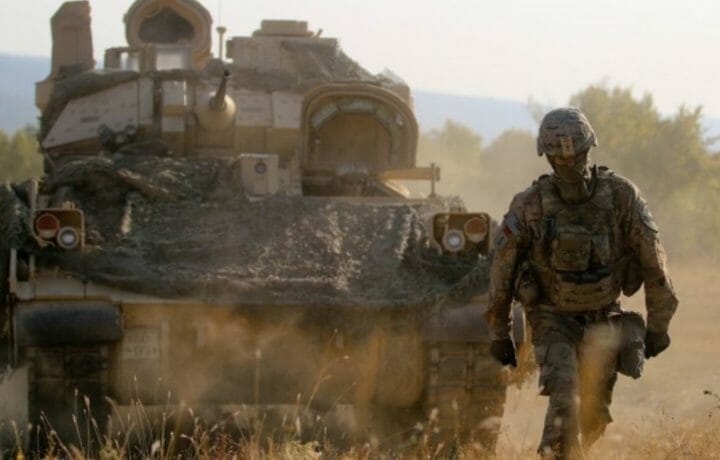The U.S. Army has made news on several ground vehicle development efforts in recent months, including the Robotic Combat Vehicle (RCV), the XM30 Mechanized Infantry Combat Vehicle, the M10 Booker Combat Vehicle; and a new variant of the M1 Abrams Main Battle Tank.
The Army announced in September that four companies – General Dynamics Land Systems, McQ Inc., Oshkosh Defense, and Textron Systems – received a total of $24.7 million in base awards to build and deliver two RCV-Light prototypes each by August 2024 for evaluation. The Army intends to pick a single contractor for RCV-Light in fiscal year (FY) 2025 and begin fielding the platform in FY 2028. RCV-Light is the first of three planned RCV variants, which are envisioned as “scouts” or “escorts” for manned fighting vehicles.
“Robotics is probably the most promising area that we have in the armored vehicle portfolio to fundamentally change how we fight,” Brig. Gen. Michael Simmering, the Army’s armor chief and armor school commandant, said on Oct. 11 at the Association of the United States Army (AUSA) annual conference in Washington, D.C. “We need to be careful not to get out over top of our skiis, but there is some promise there.”
BRADLEY SUCCESSOR
The Army announced in June that American Rheinmetall Vehicles and General Dynamics Land Systems will build prototypes of the XM30. A winner is to be selected in 2027. Formerly named the Optionally Manned Fighting Vehicle, the XM30 will replace the M2 Bradley Infantry Fighting Vehicle, which the Army has been using for more than 40 years.
For several legacy vehicles, including the Bradley, “we have re-used the hulls, we have upgraded them, we’ve given them better armor, we’ve given them better propulsion, but we’ve taken pretty much those hulls about as far as we can go with the upgrades,” Bryan McVeigh, the Army’s acting deputy program executive officer for ground combat systems, said on Oct. 11 at the AUSA conference. “That’s one of the reasons why we’re pushing for the XM30. It is time to get new legs on those systems.”
For the M10 Booker, formerly known as Mobile Protected Firepower, the Pentagon announced in June that the Army has awarded a $257.6 million contract to General Dynamics Land Systems to continue low-rate production.
Soldiers are scheduled to report to Fort Liberty, formerly Fort Bragg, in North Carolina in spring 2024 to begin training on the M10, Simmering said. The Army aims to achieve an initial operational capability in FY 2025 for the Booker, which resembles a tank but is significantly lighter than the Abrams.
For Abrams, which is also built by General Dynamics Land Systems, the Army announced in September that it will develop the M1E3 version to make the venerable tank more mobile, survivable, and upgradeable. The Army expects to achieve an initial operational capability for the M1E3 in the early 2030s.
REPLACING VIETNAM-ERA VEHICLES
Further along is the Armored Multi-Purpose Vehicle (AMPV), which BAE Systems is producing to replace the Vietnam War-era M113 armored personnel carrier. BAE Systems delivered the first AMPV to the Army in August 2020 and received a full-rate production contract worth up to $1.6 billion in August 2023.
“The AMPV addresses the M113’s shortcomings in survivability and force protection; mobility and power; and features the ability to incorporate future technologies and the Army’s network,” the service said.
The AMPV, which will operate alongside the Abrams and the Bradley, has five variants: General Purpose, Mortar Carrier, Mission Command, Medical Treatment, and Medical Evacuation.




